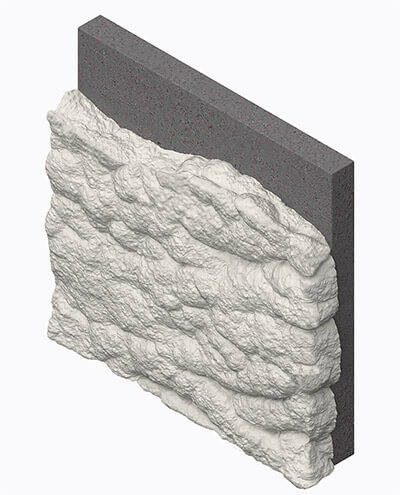
-
01
Lower Upfront Cost
High Expansion Factor Saves on Material Cost
-
02
High Expansion for Void Fill
Fills every crack and void in wall providing complete seal
-
03
Air Barrier (when applied greater than 3.5")
Provides air sealing when applied at the proper thickness
-
04
Noise Reduction
Provides through wall sound reduction for noisy environments
United Spray in Action
Open cell spray foam is generally chosen for its air sealing nature and cost effectiveness. This product is more commonly found in residential construction due to its up-front cost savings versus closed cell, however it can be useful in the right commercial application as well. Open cell is always installed on the interior, conditioned side of a space as it does not repel water, it must be protected from the elements by a vapor barrier.
Types of projects
Open Cell Spray Foam is very quickly becoming one of the most used types of insulation in the residential construction market. Spray foam creates a much more complete seal than traditional insulation like fiberglass and Cellulose and will not degrade over time.
- Residential
- Exterior Walls
- Rim Joists
- Attics
- Apartment Buildings
- Roof Decks
Open Cell Spray Foam Performance Overview
Thermal Performance
Open Cell Foam is much softer and more flexible than its closed cell counterpart due to its lower density. Although the density of Open Cell is only 1/4 that of closed cell the reduction in R-value is less than half which leads to overall cost savings. Open Cell generally provides R-3.7/inch to any assembly it is installed in.
Air Control
Open Cell Foam provides air sealing and can be used as an air barrier when installed at the proper thickness. During installation the material expands up to 100x its liquid volume and fills cracks and seams that would be difficult to access and seal with other products.
Technical Data
ASTM Standards
- ASTM D 1662 Core Density
- ASTM C 518 Thermal Conductivity
- ASTM E 283 Air Leakage
- ASTM E 84 Surface Burning Characteristics
- ASTM E 96 Water Vapor Permeance
- ASTM C 423 Noise Reduction
- ASTM D 1621 Compressive Strength
2009 IBC Section 2603.4 Thermal Barrier
Due to its combustible nature, it is required that all Open Cell Polyurethane Foams be separated from the interior of a building by a thermal barrier.
Drywall generally functions as this barrier however in cases when foam remains exposed an Intumescent Coating must be installed
ASTM C 518 - Thermal Conductivity
R-Value: 3.5 - 3.8 per inch
Manufacturers and Products
United Spray takes pride in working with the best available materials and manufacturers
For a full list of spray foam used
Spray Foam SolutionsPREVIOUS
Closed CellNEXT
Ignition Barrier











